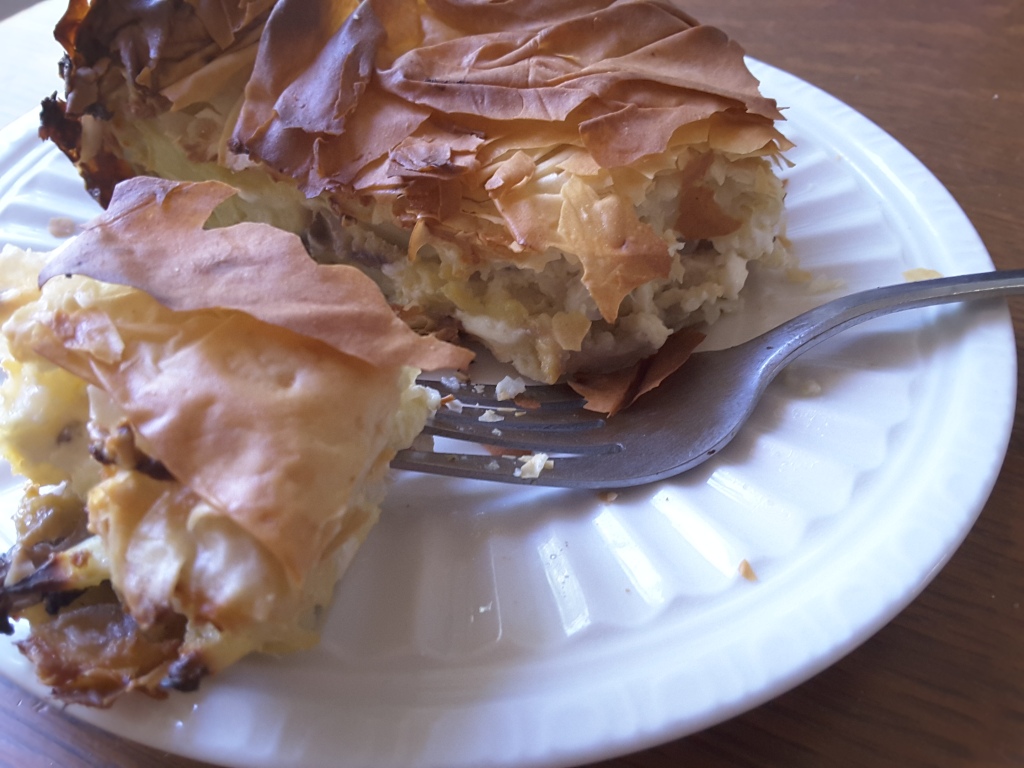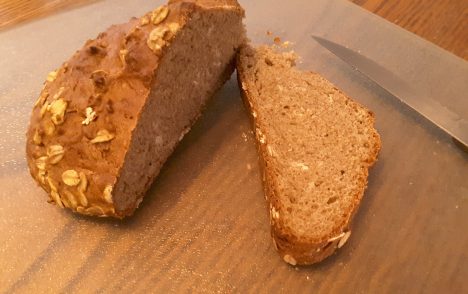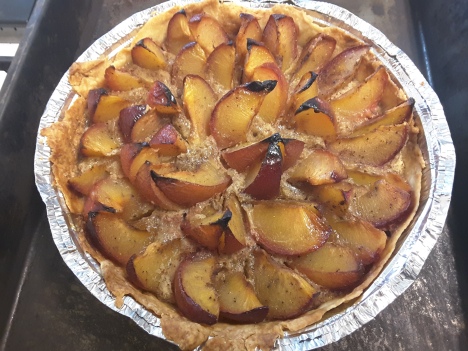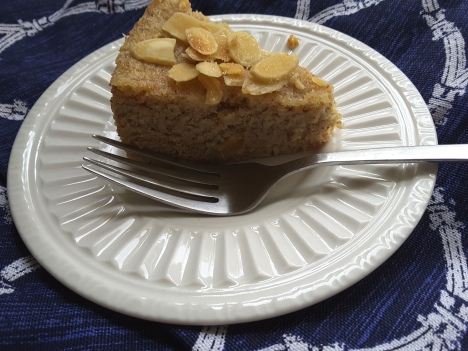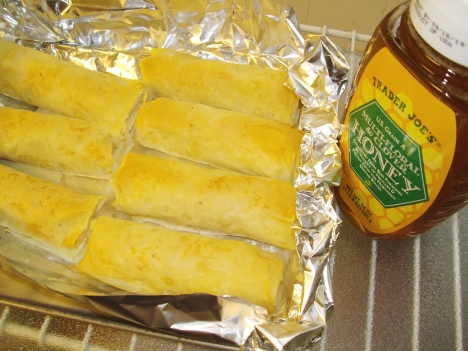It’s just past Halloween and soon to be Thanksgiving. The pumpkin bins at the Trader Joe’s will probably disappear next Tuesday morning, very convenient. The worst of it is, the only edible-grade pumpkins they sell are the little pie pumpkins. The gorgeous Cinderella’s carriage ones, a dusky pale orange-gray, are a staple of Mediterranean cooking from soups to couscous to filled fillo spirals and beyond. Even candied pumpkin as a spoon sweet. But the ones the supermarkets here sell are grown for looks only with questionable water, fertilizers and pesticides, and are presumably just for decorating your lawn and attracting rodents.
It would be so nice if they sold edible larger pumpkins like the Cinderella kind–organic ones? even in wedges, as they do in European and North African farmers’ markets. It’s a shame to see so much food potential wasted like that.
Meanwhile, Starbucks, Cinnabon and other mall favorites will no doubt be assaulting the national palate once again with an overload of nutmeg and cinnamon extracts–the gastronomic equivalent of “Rockin’ Around the Xmas Tree” and “Feliz Navidad” played endlessly over the PA system wherever you go shopping. Taste is no object.
So my grumbling has resulted in a couple of searches for pumpkin with spices that don’t threaten anyone’s latte. I’ve been cruising my ever-growing collection of Mediterranean and Near Eastern cookbooks in search of good vegetarian and vegetable dishes that I can speed up with the help of a microwave without losing flavor.
Just by starting with a microwaved butternut or other whole red squash, you can cut the roasting, peeling and chopping time and effort (and danger of self-inflicted wounds) way down. Some decent savory recipe ideas can be done with ordinary cans of plain packed pumpkin too.
Then my preference is to go savory rather than sweet. It’s more interesting, for one thing, and it’s more versatile too. Finally, I look to see if I can make some of the recipes I find faster, svelter–and preferably both.
I see little benefit to using heavy cream, full sticks of butter, and extra egg yolks for “richness,” which mostly means as bulking ingredients more than for actual flavor. My head, my heart, my doctor and my hips are all in accord with me on this one. Besides, I’m a cheese freak. In my world, you need to save up your limited saturated fat allowance for stilton or chevre or camembert–something with funk and flash and that lightningy je ne sais quoi.
My lineup of adaptations so far:
Kolokithopita
Like spanakopita triangles or fillo rolls but instead of spinach and feta, use cooked and fairly dry pumpkin (or in this case butternut squash) mashed with feta, oregano and/or thyme (or fresh za’atar if you can get it), hot pepper flakes, a little tehina sauce or some garlic and lemon.

Butternut squash fryup–just add a little feta and some hot pepper flakes
If you’re only making 4-8 rolls or triangles, you can stick them on a length of foil that fits your toaster oven. Use a sandwich baggie over your hand to dab very sparing amounts of olive or expeller-pressed grapeseed oil or other light vegetable oil on each individual fillo sheet before folding in thirds, putting the filling on and rolling or folding. Brush the tops very lightly with a little more oil, turn down your toaster oven settings to about 400F and bake for about 10 minutes. When the tops are golden brown, turn the pastries over very gently and bake the whitish bottoms a little longer.
Pumpkin Gorgonzola Flans with Toasted Walnuts

Butternut squash savory flan, slimmed down
adapted from Dorie Greenspan’s Around My French Table
This one has to be microwaveable–it’s a custard base, after all. It also, and I mean this, has to be svelte-able. Really. Greenspan uses 3 eggs plus 2 yolks and half a cup of heavy cream for only one 15-ounce can of packed pumpkin. That’s pretty obscenely rich, especially with 4 ounces or so of crumbled gorgonzola and some toasted walnuts sprinkled over the 6 individual ramekins before baking in a water bath in a conventional oven. And she suggests creme fraiche or sour cream as a garnish? Yikes.

Flan in quarters
Microwave-safe ceramic ramekins are pretty inexpensive if you shop Ross for Less or Target. I didn’t have gorgonzola or any kind of bleu on hand, so I winged it for concept with some feta. I will say I’ve noticed that at least Stella gorgonzola melts into a runny sauce in a microwave–good if you want a smooth gorgonzola salad dressing, not so good for a recipe like this where you don’t want it to disappear into the flan. Maybe a more solid bleu like Stilton will melt and run but I’m hoping it stays together better. Also, nuts in the microwave–maybe not a good idea, at least for big chunks. Even with the moisture from the flan taking the brunt of the energy, I kind of think you’re at risk of scorching them from the inside out, particularly if they’re on top of the flan. Better to roast them separately on a lowered heat in the toaster oven–200-250F for 5 minutes or so while the flan is going in the microwave, then sprinkle them on afterward as a garnish.
My half-recipe test came out pretty delicious on its own merits and I’m going to buy a small wedge of Stilton to try next. Because I mashed the butternut squash with a fork rather than using a purée, it’s a little rougher and less refined but the fresh taste is noticeable and lighter. Using plain nonfat yogurt in place of the heavy cream also made it obviously lighter and played up the tang that gorgonzola and bleu normally contribute. The acidic yogurt may be counterintuitive if you’re thinking conventional cooking, but the small addition of flour plus the egg plus the starch and fiber in the squash prevent it from separating and curdling under heat.
Half-recipe pumpkin flan for lunch (serves 1-3 for lunch or an appetizer/side dish)
- 6-7 oz/185 g chunk of cooked (microwaved, roasted, leftover) butternut or other red squash
- 1 lg egg
- 1/4 c or large heaping soupspoon of plain nonfat milk-and-cultures-only yogurt (not even Greek! just the cheap regular!)
- small clove of garlic, mashed/minced/grated
- pinch or stem worth of thyme
- 1 t flour
- 1 oz crumbled feta
- sprinkle of smoked paprika, grind of black pepper to taste
- toasted walnuts, optional
Mash everything up to the feta together in a microwaveable soup bowl, sprinkle on a little paprika and/or pepper, cover the bowl lightly with a lid or saucer, microwave 3 minutes on HIGH. Lift the lid carefully to check–it may still be liquidy in the center but cooked towards the outside rim. If the bowl’s very hot, let it sit covered another couple of minutes, jiggle again to see if the center’s cooked. If not, give it another 30 seconds and let sit again to cool down enough to handle. Cut into 3-4 pieces and serve–garnish as desired.
Filed under: baking, cooking, DASH Diet, frugality, haute cuisine, holiday cooking, Revised recipes, Vegetabalia | Tagged: food, recipes, Thanksgiving recipes | Comments Off on A different take on pumpkin “spice”




